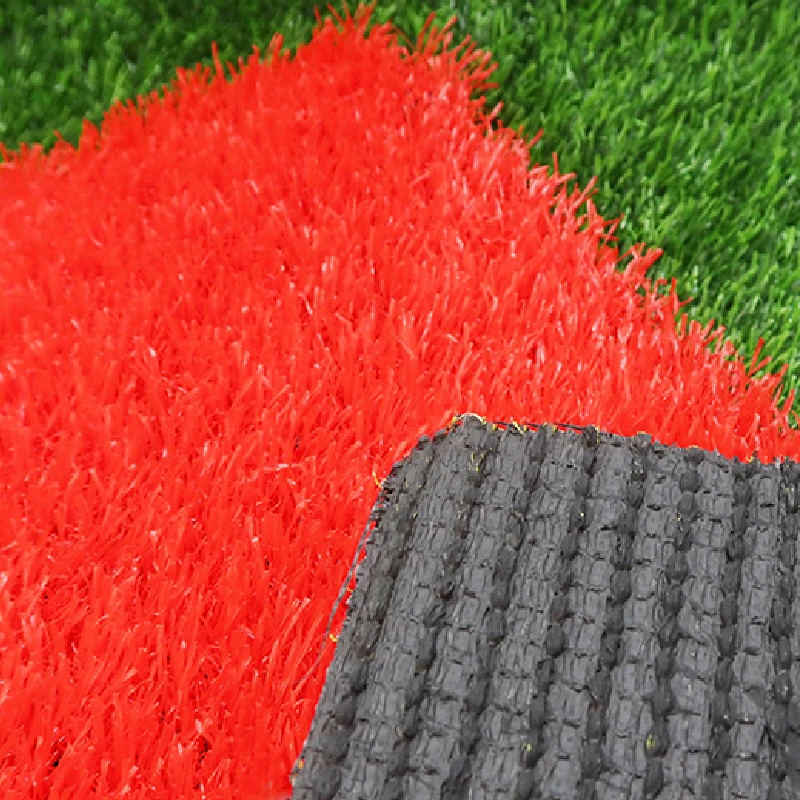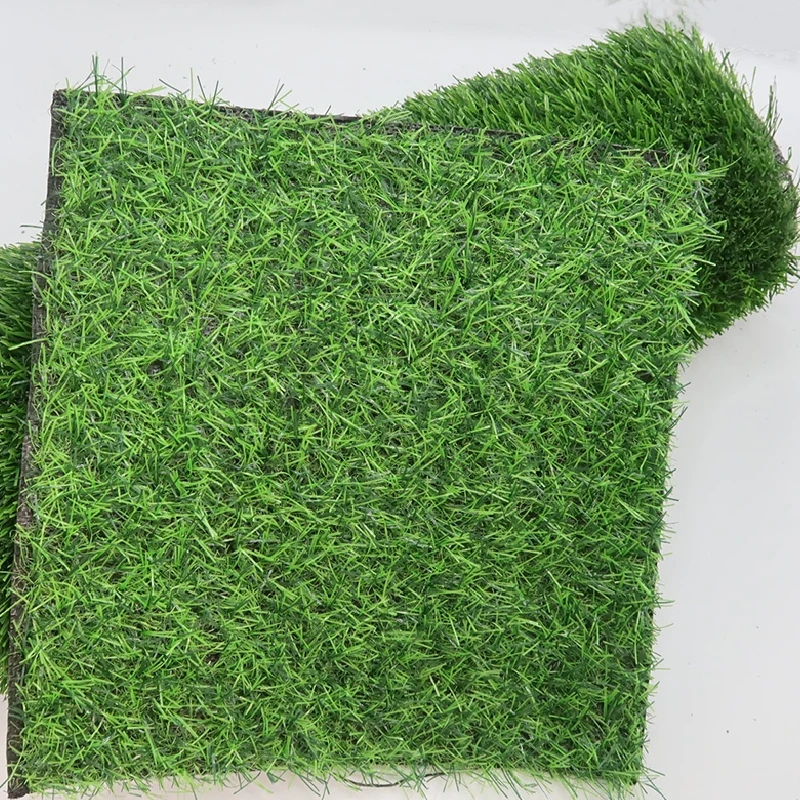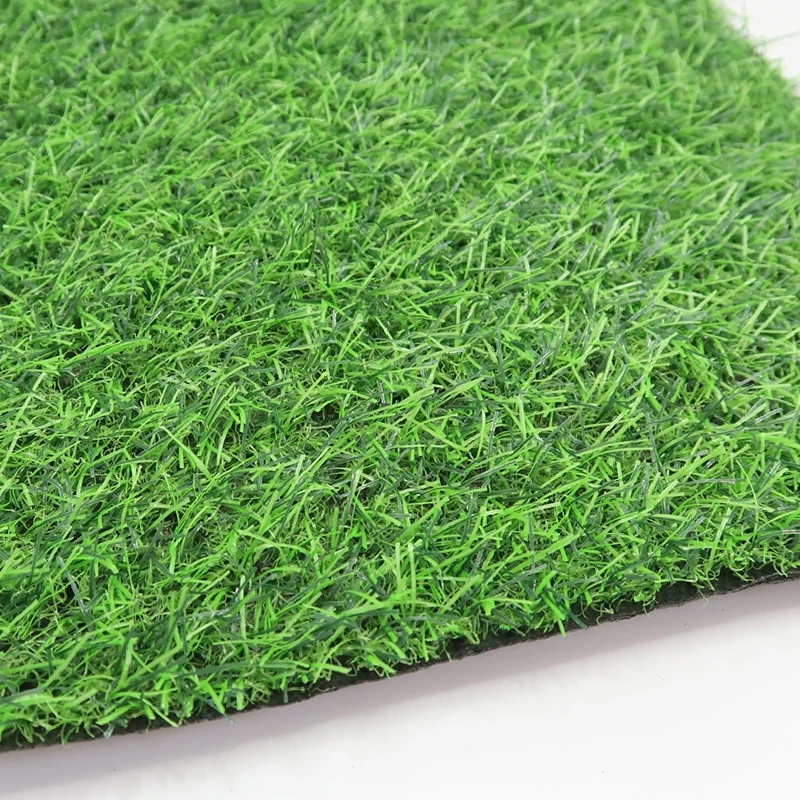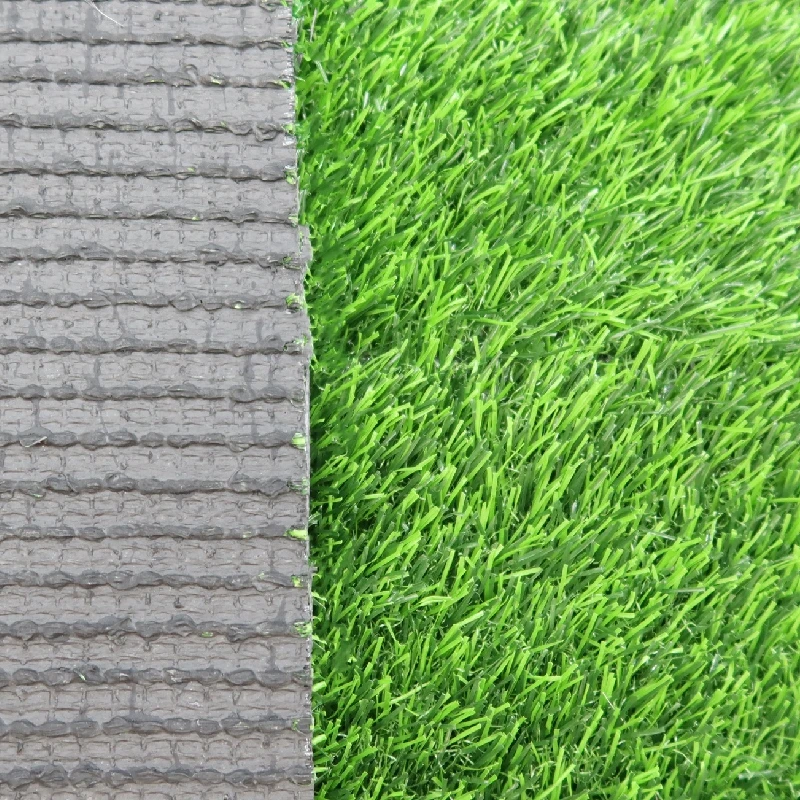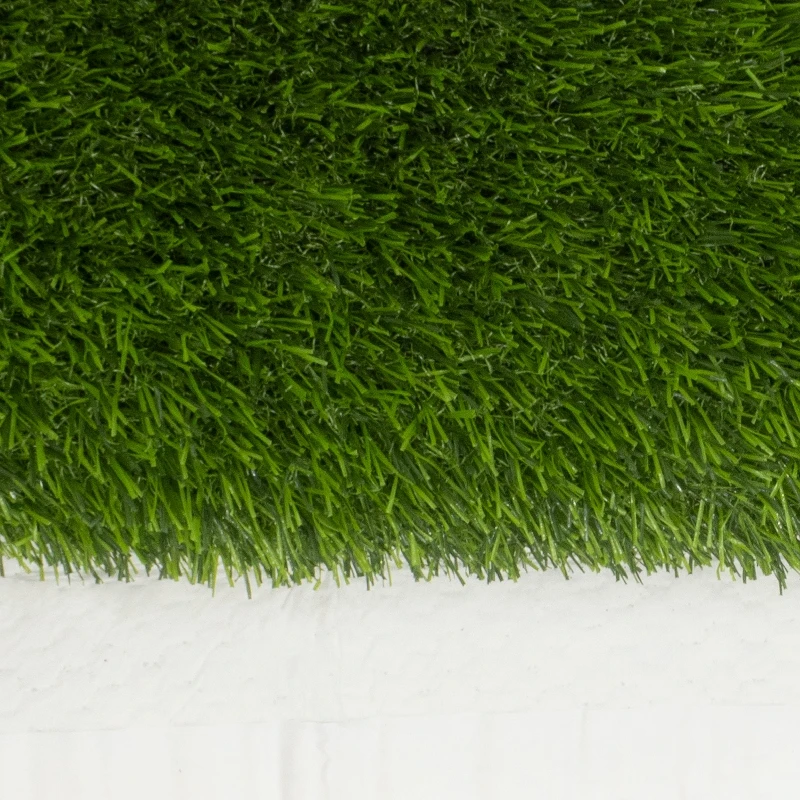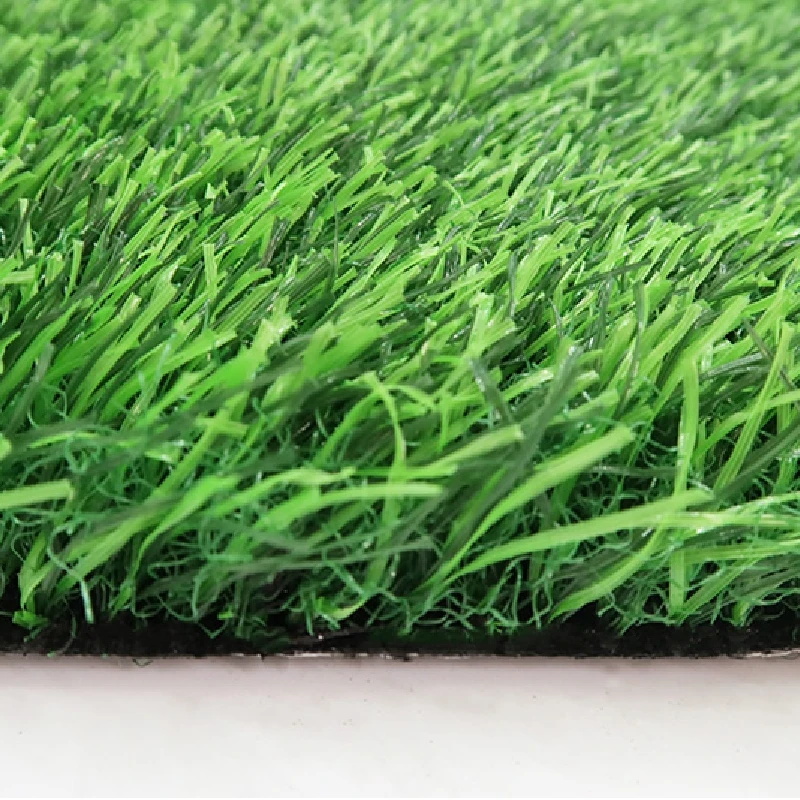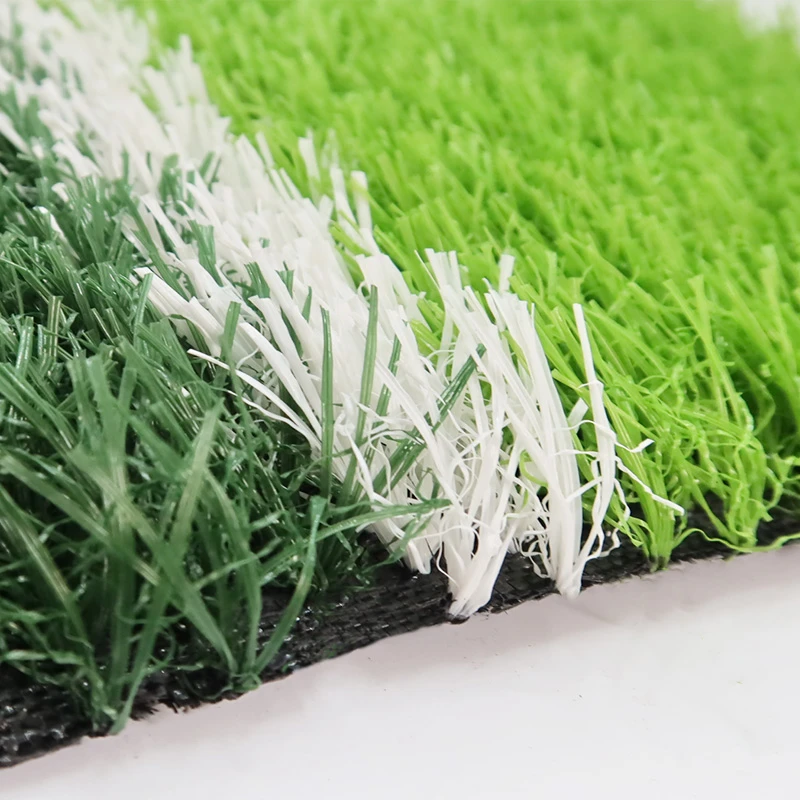Backyard Putting Green Construction | Artificial Turf Installation
Aug . 17, 2025 04:00 Back to list
The Ascendant Trend of Premium Backyard Putting Green Construction
The landscape of luxury home amenities and recreational facilities is continuously evolving, with a notable surge in demand for bespoke outdoor features that combine leisure with aesthetic appeal. Among these, the development of sophisticated backyard putting green construction has emerged as a significant trend, transforming conventional backyards into professional-grade golf practice areas. This shift is largely driven by advancements in synthetic turf technology, offering unparalleled consistency, durability, and low maintenance compared to natural grass counterparts. The market for artificial putting green construction is experiencing robust growth, fueled by both residential property owners seeking personal golf sanctuaries and commercial entities, such as resorts and golf academies, aiming to provide superior practice facilities. The inherent advantages of synthetic turf—including water conservation, elimination of pesticides, and consistent playability regardless of weather—make it an economically and environmentally judicious choice. This introductory segment delves into the overarching industry trends propelling the adoption of advanced putting green solutions, setting the stage for a comprehensive exploration of the technical parameters, construction methodologies, and strategic advantages that define this rapidly expanding sector. The meticulous planning and execution involved in these projects necessitate a deep understanding of specialized materials and precise installation techniques, ensuring a premium golfing experience right at one's doorstep or within a commercial setting.
The increasing sophistication of artificial turf construction has broadened its appeal beyond traditional sports fields, finding new applications in diverse sectors that demand high-performance, low-maintenance green spaces. While our primary focus here is on putting greens, it's worth noting the versatility of artificial grass, exemplified by products like Hoyarn Grass's Artificial Grass for Construction Sites, which addresses specific needs in industrial environments requiring durable, clean, and safe ground cover solutions. This broad application spectrum underscores the engineering prowess and material science advancements inherent in modern synthetic turf. For putting greens, the trend leans heavily towards customization, allowing for varied contours, undulations, and hole placements to simulate diverse golf course challenges. This level of personalization, combined with the consistent roll and realistic ball response of high-quality synthetic turf, provides an invaluable asset for golfers of all skill levels. Furthermore, the long-term cost savings associated with minimal upkeep—eliminating mowing, watering, fertilizing, and pest control—present a compelling economic argument for investing in a professionally installed backyard putting green construction. These factors collectively contribute to a robust market dynamic, positioning artificial putting greens as a premier choice for enhancing property value and lifestyle.
The Advanced Engineering and Construction Process of Artificial Putting Greens
The construction of a high-performance backyard putting green construction involves a sophisticated multi-layered process, beginning with meticulous site preparation and culminating in the precise installation of specialized synthetic turf. This detailed approach ensures optimal drainage, consistent ball roll, and exceptional longevity, mimicking the feel and performance of a professional natural green. The initial phase, earthwork and sub-grade preparation, is critical, involving excavation to the desired depth and grading for proper water runoff. This is followed by the installation of a compacted aggregate base, typically crushed granite or limestone, which forms the structural foundation. This base material is precisely leveled and compacted to achieve a stable and permeable sub-surface, crucial for preventing water pooling and maintaining the green's integrity over time. Drainage solutions, such as perforated pipes or a permeable geotextile layer, are integrated to manage subsurface water effectively, an essential consideration for long-term durability. Quality control at this stage includes compaction testing to ensure uniformity and stability, aligning with industry standards for load-bearing and dimensional stability. This foundational work sets the stage for the turf application, representing a blend of civil engineering principles with specialized landscaping techniques to create a resilient and high-performing putting surface.
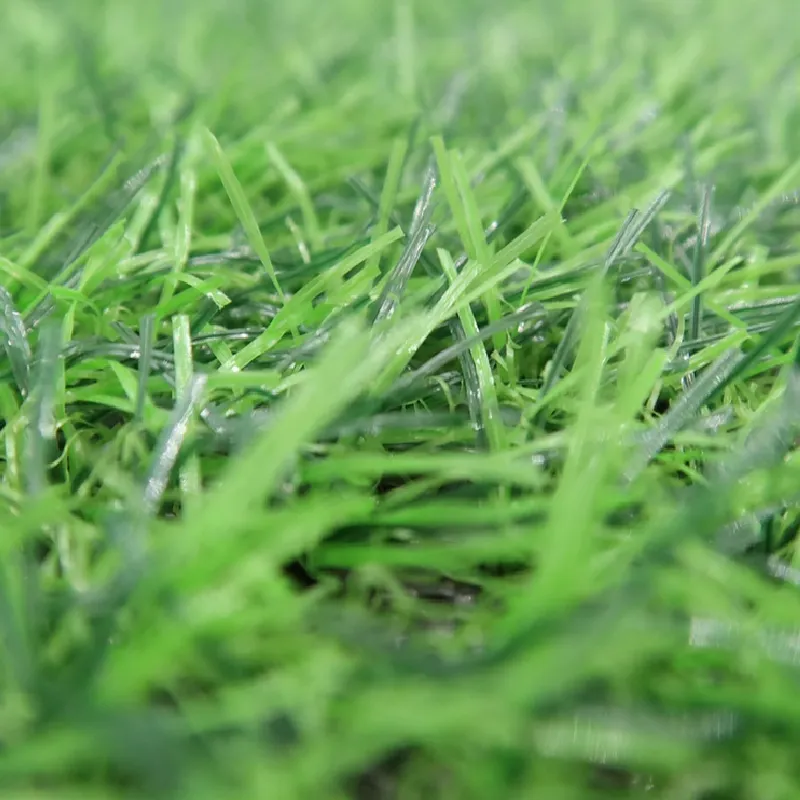
Following the base preparation, the installation of the synthetic turf itself is a precision-driven task within artificial putting green construction. High-quality putting green turf is manufactured using advanced extrusion processes for the yarn fibers, often a blend of polyethylene and polypropylene, designed to mimic the aesthetics and performance of natural grass. The backing, typically a robust polypropylene or polyurethane material, ensures dimensional stability and adhesion. During installation, turf sections are carefully laid, seamed, and secured, often using specialized adhesives and infill materials like silica sand or crumb rubber. The infill plays a crucial role in supporting the turf blades, providing ballast, and regulating ball speed and roll. Advanced manufacturing processes for the turf blades ensure consistency in fiber density and resilience, with strict adherence to ISO 9001 quality management systems. Furthermore, the material used in high-performance artificial grass is rigorously tested for UV stability, tensile strength, and permeability to ensure a prolonged lifespan, often exceeding 15-20 years even under heavy use. This robust material engineering and precise installation methodology ensure that the finished backyard putting green construction delivers a consistent, high-fidelity golfing experience with minimal maintenance requirements.
Key Technical Specifications and Performance Metrics for Backyard Putting Greens
Understanding the technical specifications of synthetic turf is paramount for successful backyard putting green construction. Critical parameters include pile height, stitch rate, gauge, face weight, and infill type, each contributing significantly to the green's performance characteristics such as ball roll speed (Stimpmeter reading), consistency, and resilience. Pile height, typically ranging from 0.5 to 1.5 inches for putting greens, influences ball speed and realism; shorter piles generally yield faster greens. The stitch rate, or the number of stitches per linear unit, along with the gauge (distance between rows of stitches), determines the density of the turf, impacting durability and aesthetic appeal. Face weight, measured in ounces per square yard, represents the total weight of the yarn fibers and is a strong indicator of product quality and longevity. Moreover, the choice of infill material—be it specialized silica sand, crumb rubber, or even organic options—is crucial for providing proper ball bounce, maintaining blade integrity, and ensuring adequate drainage. These elements are not merely specifications but are precisely calibrated to meet stringent performance benchmarks, ensuring that the constructed putting green offers a professional-grade experience.
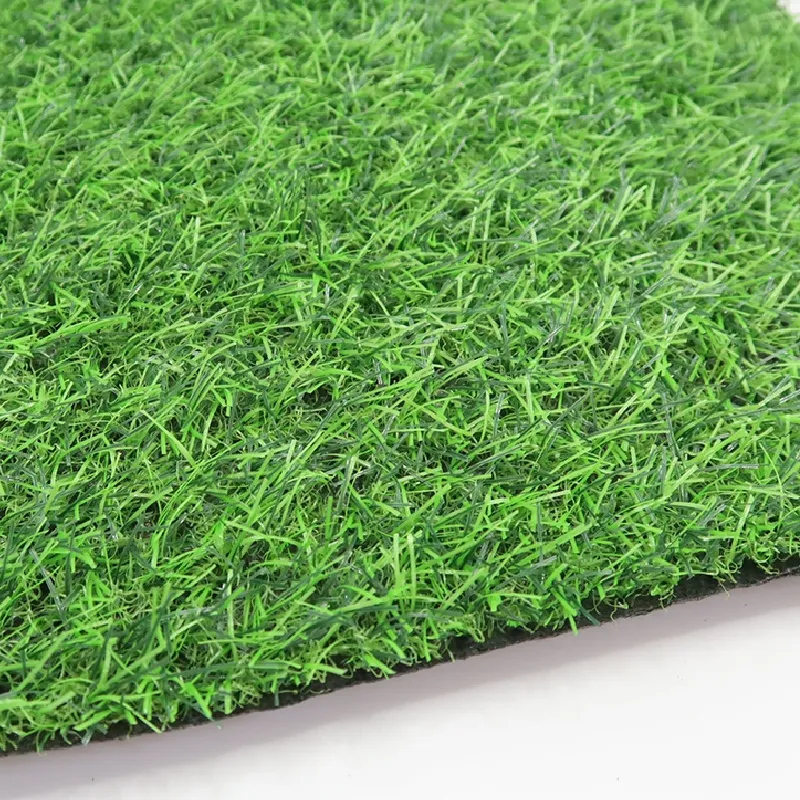
To further illustrate the technical aspects, consider the following typical parameters for high-quality artificial putting green construction, which inform both design and functionality:
| Parameter | Description | Typical Range for Putting Greens | Impact on Performance |
|---|---|---|---|
| Pile Height | Height of the synthetic grass blades. | 0.5 - 1.5 inches (12.7 - 38.1 mm) | Shorter piles typically result in faster Stimpmeter readings (ball roll speed). |
| Face Weight | Weight of the yarn per square yard, excluding backing and infill. | 40 - 80 oz/sq yd (1356 - 2712 g/sq m) | Higher face weight often correlates with durability and dense, realistic appearance. |
| Gauge | Distance between stitch lines (rows of tufts). | 3/8", 5/8", 3/4" | Affects turf density and overall aesthetic; tighter gauges are denser. |
| Stitch Rate | Number of stitches per linear inch (or cm) of a stitch line. | 20 - 30 stitches/3.94 inches (10 cm) | Higher stitch rates contribute to turf density and resilience. |
| Dtex (Decitex) | Weight in grams of 10,000 meters of yarn. Indicates fiber thickness/strength. | 7,000 - 15,000 Dtex | Higher Dtex means thicker, more durable fibers. |
| Backing Material | The fabric on which the turf fibers are tufted. | Polypropylene or Polyurethane | Provides dimensional stability, drainage, and tuft lock. Polyurethane is often superior for durability and weather resistance. |
| Infill Type | Granular material brushed into the turf fibers after installation. | Silica Sand, Crumb Rubber, Zeolite, Acrylic Coated Sand | Supports blades, provides ballast, affects ball roll speed and absorption, improves drainage. |
The meticulous selection of these parameters, combined with precision manufacturing, ensures that the artificial turf construction process culminates in a putting green that not only looks authentic but also performs consistently year-round. Such detailed technical considerations are what differentiate a premium installation from a standard one, delivering genuine value and an enhanced golfing experience for the end-user.
Versatile Application Scenarios and Strategic Advantages
The versatility of backyard putting green construction extends far beyond individual residential properties, offering significant strategic advantages across various commercial and institutional settings. In the B2B sphere, these installations are increasingly vital for enhancing amenity offerings and operational efficiency. For instance, luxury resorts and boutique hotels integrate artificial putting greens to provide exclusive recreational activities for guests, significantly boosting guest satisfaction and occupancy rates. Real estate developers leverage them as high-value selling points for new housing communities, showcasing a lifestyle of convenience and recreation. Corporate campuses are incorporating them as wellness amenities, fostering employee engagement and stress reduction through accessible leisure activities. Furthermore, golf academies and sports training facilities utilize these greens for consistent, all-weather practice environments, allowing for year-round training regardless of climatic conditions, which is crucial for athlete development and performance tracking. The low operational overhead and consistent playability of artificial surfaces make them particularly attractive for entities managing multiple properties or requiring high-traffic solutions.
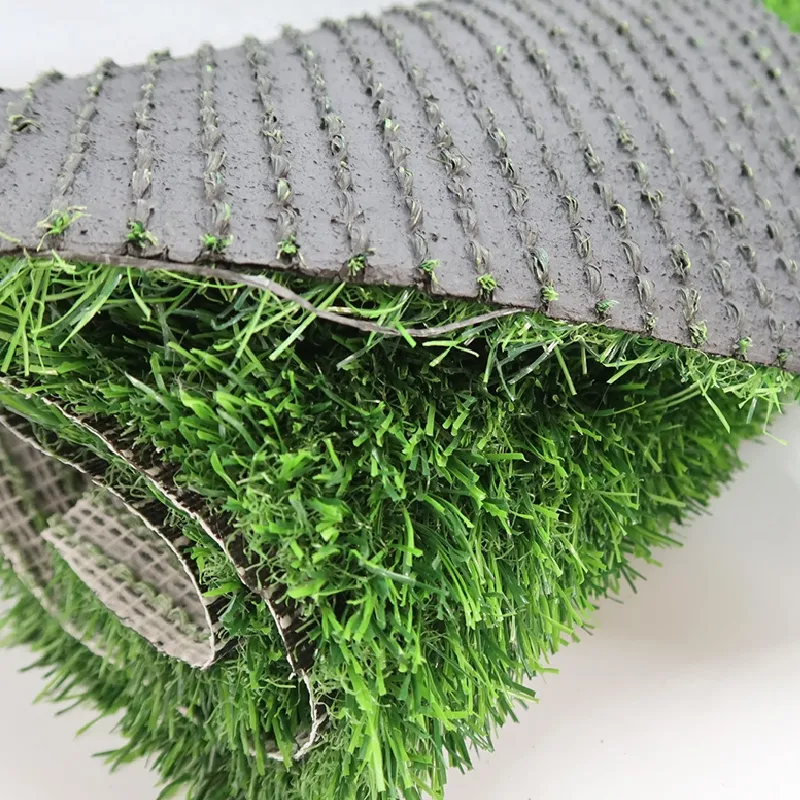
The strategic advantages of professional artificial putting green construction over traditional natural grass alternatives are multifaceted. From an economic perspective, the significant reduction in water consumption (up to 70% compared to natural grass) and the elimination of costly maintenance activities such as mowing, fertilizing, aerating, and pest control translate into substantial long-term savings. Environmentally, the absence of chemical fertilizers and pesticides reduces ecological impact, contributing to sustainable practices. Operationally, synthetic greens offer consistent performance across varying weather conditions, eliminating downtime due to rain or extreme heat, which is a major benefit for commercial operations reliant on continuous facility availability. The durability of modern artificial turf, designed to withstand heavy foot traffic and resist UV degradation, ensures a prolonged aesthetic and functional lifespan, often backed by extensive warranties. This blend of economic efficiency, environmental responsibility, and unparalleled operational consistency positions artificial putting greens as a superior investment for businesses and institutions aiming to provide premium recreational facilities without the associated burdens of natural turf maintenance. The adaptability of artificial turf construction also allows for unique designs tailored to specific spatial and aesthetic requirements, further enhancing its appeal in a diverse array of application contexts.
Custom Solutions and Manufacturer Expertise in Artificial Turf Construction
The creation of a truly exceptional backyard putting green construction requires more than just high-quality materials; it demands the expertise of manufacturers and installers who can deliver tailored solutions to meet specific client needs and site conditions. Reputable manufacturers, such as Hoyarn Grass, distinguish themselves by offering comprehensive custom design services, working closely with clients to translate their vision into a functional and aesthetically pleasing reality. This customization extends to selecting the ideal turf specifications (e.g., pile height for desired Stimpmeter speed, color variations, and backing materials for specific climate resilience), designing complex contours and undulations to simulate varied golf course challenges, and integrating features like fringe areas, bunkers, and chipping stations. The ability to engineer precise slopes and breaks is critical for a realistic putting experience, requiring advanced surveying and grading techniques. Manufacturers with robust R&D capabilities continuously innovate, developing new fiber technologies that offer enhanced durability, UV stability, and natural feel. Choosing a manufacturer with a proven track record in intricate artificial turf construction projects ensures that the final product not only meets but exceeds performance expectations, providing a significant return on investment.
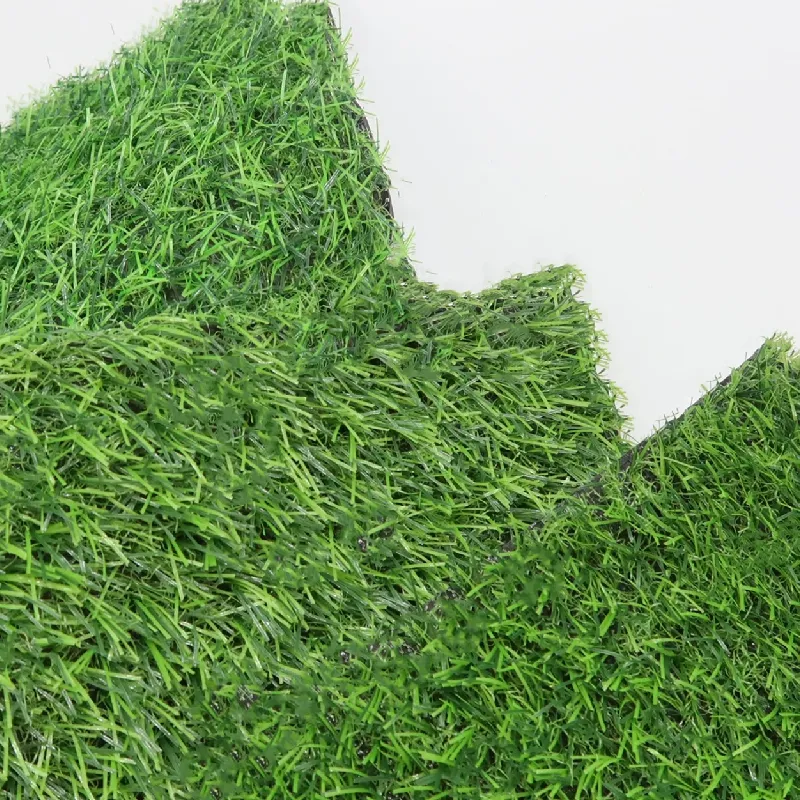
Manufacturer expertise is also evident in their adherence to stringent quality control protocols throughout the entire production and installation chain. This includes rigorous testing of raw materials, continuous monitoring during the turf tufting process, and final product inspections to ensure compliance with international standards such as ISO 9001 for quality management and ISO 14001 for environmental management. For specialized applications like artificial putting green construction, this meticulous approach ensures the turf's integrity, UV resistance, and consistent performance characteristics over its extensive lifespan. Furthermore, a highly skilled manufacturer will provide detailed installation guidelines and technical support, or even offer full-service installation by certified crews, guaranteeing optimal outcomes. Their experience in navigating various environmental conditions—from extreme heat to freezing temperatures—allows for the recommendation of turf systems specifically engineered to thrive in diverse geographical regions. This partnership approach, from initial concept to post-installation support, is what truly sets apart leading providers in the artificial grass industry, ensuring clients receive a durable, high-performing, and visually stunning putting green solution.
Quality Assurance, Certifications, and Trustworthiness in Backyard Putting Green Projects
In the highly competitive market for backyard putting green construction, establishing trust and demonstrating authoritative expertise are paramount. Leading manufacturers and installers underscore their trustworthiness through adherence to internationally recognized quality standards and comprehensive certification programs. This includes ISO 9001 certification for quality management systems, which ensures consistent product quality and customer satisfaction, and ISO 14001 for environmental management, reflecting a commitment to sustainable practices. Product-specific testing, such as UV stability (e.g., ASTM G154 or G155), pile pull strength, permeability rates, and heavy metal content (e.g., EN 71-3 for toys, relevant for non-toxic materials), provide objective data validating the turf's performance and safety. Authoritative entities often commission independent third-party laboratories to conduct these tests, providing unbiased verification of product claims. For instance, advanced turf products might boast a UV degradation rate of less than 10% over 10,000 hours of accelerated weathering, indicating exceptional color retention and structural integrity. This level of verifiable performance data is crucial for B2B decision-makers who require long-term reliability and minimal operational risk from their artificial turf construction investments.
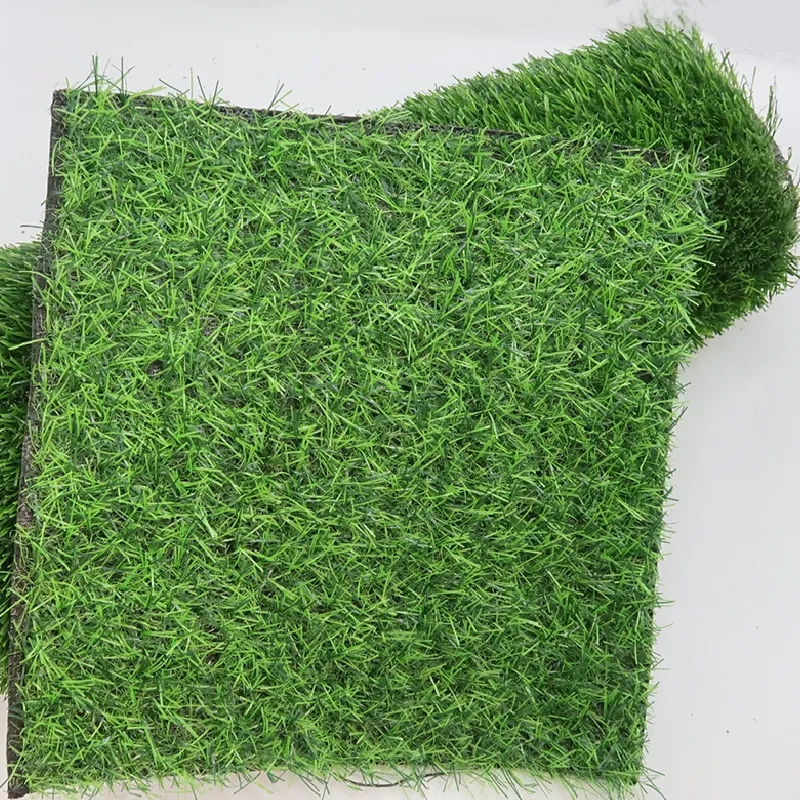
Further building trustworthiness, reputable providers in backyard putting green construction offer robust warranty programs and transparent customer support frameworks. A typical warranty for high-quality artificial putting green turf ranges from 8 to 15 years, covering manufacturing defects and excessive UV degradation, providing clients with long-term peace of mind. Delivery cycles are optimized through efficient supply chain management, ensuring timely project completion; for standard projects, material delivery might be quoted within 3-4 weeks, with installation taking an additional 1-2 weeks depending on complexity. Customer support extends beyond mere problem-solving; it encompasses comprehensive guidance on maintenance best practices, troubleshooting, and access to a dedicated service team. For example, a client might receive an annual visit for a professional inspection or deep cleaning service. Case studies and client testimonials, highlighting successful installations for renowned golf courses, luxury residences, or commercial venues, serve as powerful endorsements, demonstrating real-world experience and client satisfaction. These elements collectively establish a framework of reliability and accountability, essential for fostering strong, long-term relationships with B2B clients who prioritize proven performance and dependable partnerships in their artificial putting green construction endeavors.
Frequently Asked Questions (FAQ) about Backyard Putting Green Construction
Prospective clients often have critical questions regarding the feasibility, maintenance, and longevity of backyard putting green construction. Addressing these common inquiries transparently is crucial for fostering trust and facilitating informed decision-making. One frequently asked question pertains to the lifespan of an artificial putting green. High-quality synthetic turf, properly installed and maintained, typically lasts between 15 to 20 years, significantly outperforming natural grass in terms of durability and consistent playability over time. This extended lifespan is a key advantage, reducing the need for costly replacements and intensive upkeep. Another common concern revolves around maintenance requirements. Unlike natural grass, artificial greens do not require mowing, watering, fertilizing, or chemical treatments. Routine maintenance generally involves simply brushing the turf to maintain pile direction and occasionally removing debris, vastly simplifying property management for both residential and commercial applications. The minimal maintenance aspect is a significant driver for the adoption of artificial turf construction solutions.
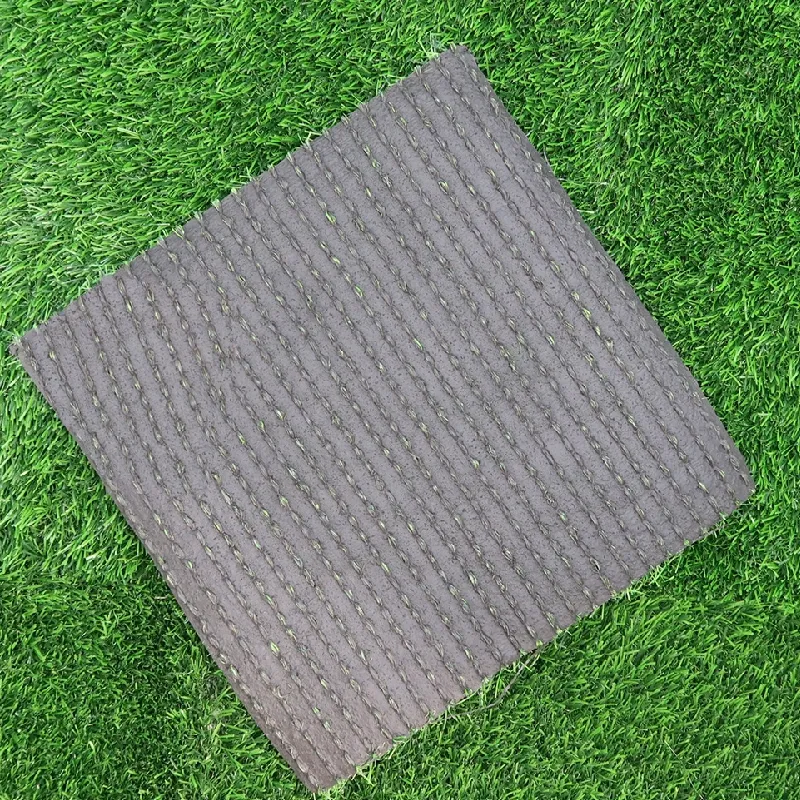
Clients also frequently inquire about the cost-effectiveness of backyard putting green construction. While the initial investment for artificial turf may be higher than for natural grass, the long-term savings on water, labor, and maintenance products typically result in a favorable return on investment within 3-5 years. Furthermore, the ability to practice golf year-round, regardless of weather conditions, adds intrinsic value that is difficult to quantify purely in financial terms. The environmental impact is another key consideration. Artificial putting greens significantly reduce water consumption, which is particularly beneficial in drought-prone regions, and eliminate the need for harmful pesticides and fertilizers that can leach into groundwater. Finally, questions often arise regarding the customization options available. Premium providers can tailor the size, shape, contours, hole placements, and even the Stimpmeter speed of the green to meet specific preferences and skill levels, ensuring a truly personalized and challenging golfing experience. This comprehensive FAQ approach ensures that all potential concerns are proactively addressed, reinforcing the expertise and trustworthiness of the provider in the complex domain of artificial turf construction.
Conclusion: The Future of Recreational Landscaping
The evolution of backyard putting green construction reflects a broader trend towards innovative, sustainable, and high-performance recreational landscaping solutions. By leveraging advanced synthetic turf technology and precision installation methodologies, these greens offer an unparalleled combination of consistent playability, minimal maintenance, and environmental benefits. From enhancing residential properties with bespoke golf practice areas to adding significant value to commercial ventures like resorts and corporate campuses, the strategic advantages of artificial putting greens are undeniable. The detailed technical specifications, robust quality assurance protocols, and the capacity for extensive customization underscore the expertise and trustworthiness required for successful projects in this specialized field. As the demand for convenient, high-quality leisure amenities continues to grow, the adoption of professional artificial turf construction for putting greens is poised for sustained expansion. Investing in a meticulously designed and installed artificial putting green is not merely an enhancement but a strategic decision that delivers long-term value, superior performance, and a sustainable approach to modern outdoor living and entertainment. This comprehensive understanding ensures that decision-makers are well-equipped to embark on their next recreational landscaping project with confidence and clarity.
References
- Smith, J. A. (2022). "Advances in Polymeric Materials for Synthetic Turf Systems." Journal of Applied Polymer Science, 140(5), e53201.
- Davis, P. R., & Chen, L. (2021). "Economic and Environmental Impact Assessment of Artificial vs. Natural Turf in Recreational Facilities." Environmental Management and Sustainable Development, 10(2), 87-102.
- International Organization for Standardization. (2015). ISO 9001: Quality management systems – Requirements.
- American Society for Testing and Materials. (2013). ASTM F1551: Standard Test Methods for Composite Properties of Turf (Simulated).
- Green, M. T. (2023). "Optimizing Base Layer Construction for Synthetic Putting Greens: A Geotechnical Perspective." Journal of Geotechnical and Geoenvironmental Engineering, 149(8), 04023075.
-
Durable, Eco-Friendly Turf for Balcony | Enhance Your Urban Space
NewsNov.24,2025
-
Turf Between Pavers: Sustainable Green Paving Solutions for Modern Urban Spaces
NewsNov.24,2025
-
Discover the Benefits of Turf and Pavers Backyard | Sustainable Outdoor Design
NewsNov.24,2025
-
Top Quality Artificial Grass – Sustainable, Durable, and Stylish Turf Solutions
NewsNov.24,2025
-
Durable and Eco-Friendly Thick Artificial Grass Solutions | Hoya Grass
NewsNov.24,2025
-
Synthetic Turf: Sustainable Green Solutions for Sports, Industry & Urban Living
NewsNov.24,2025
Products categories



